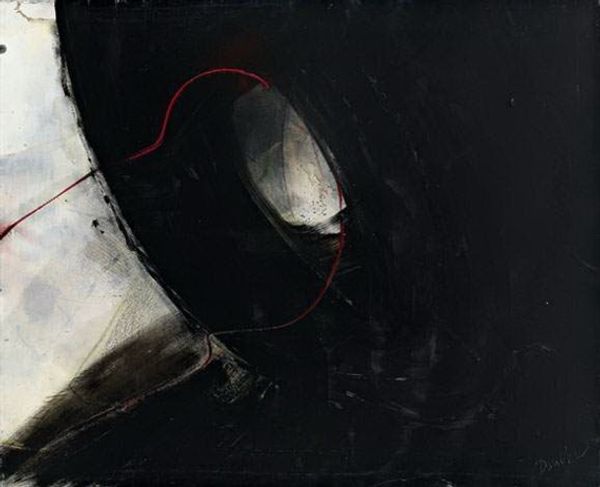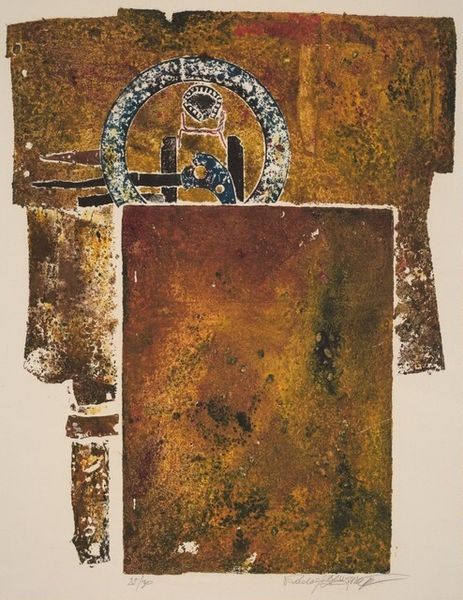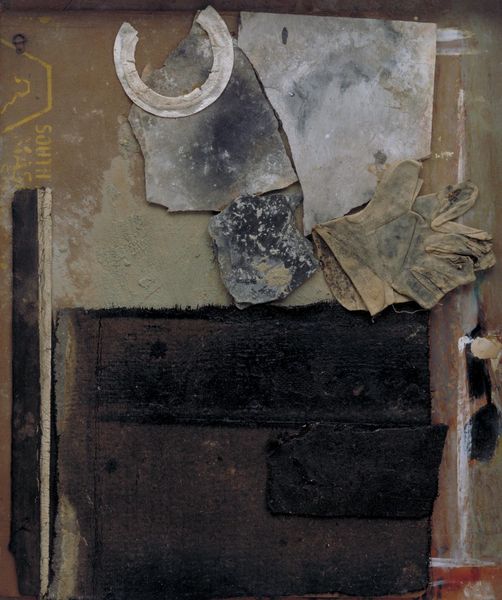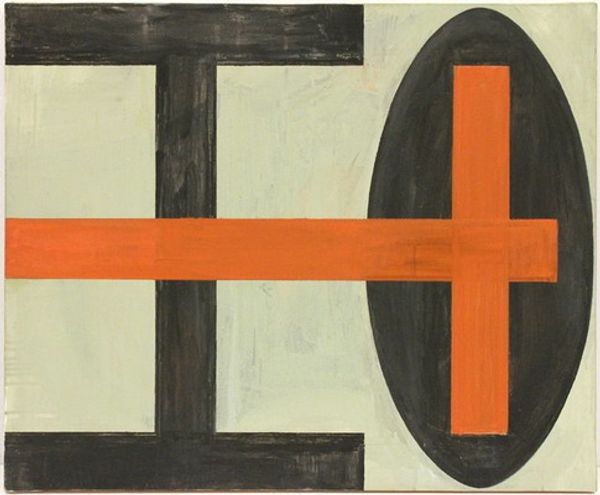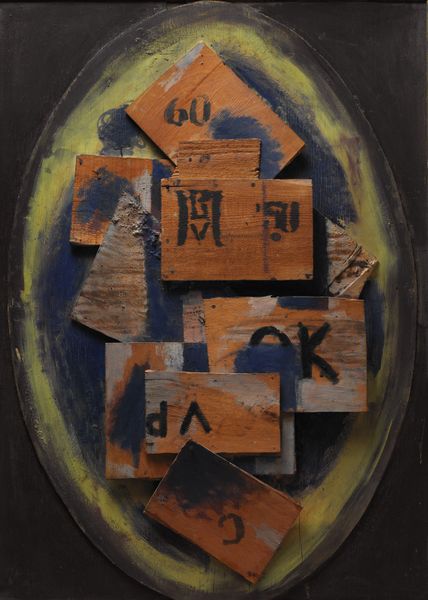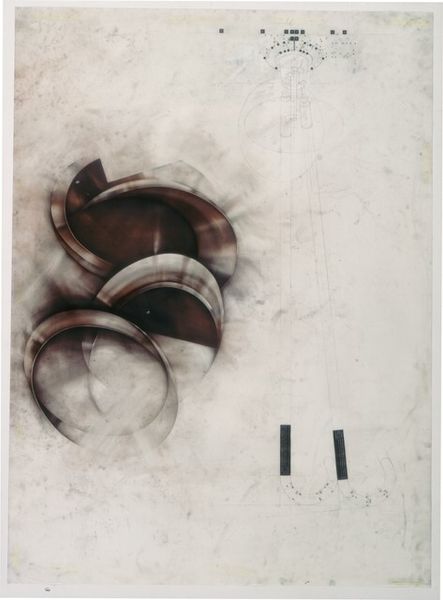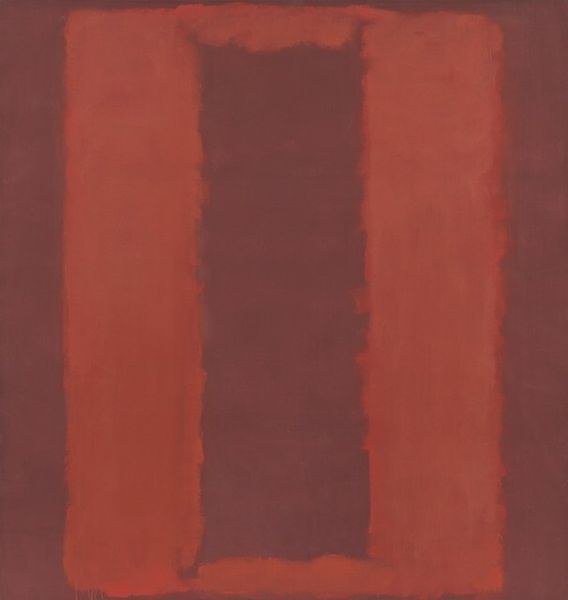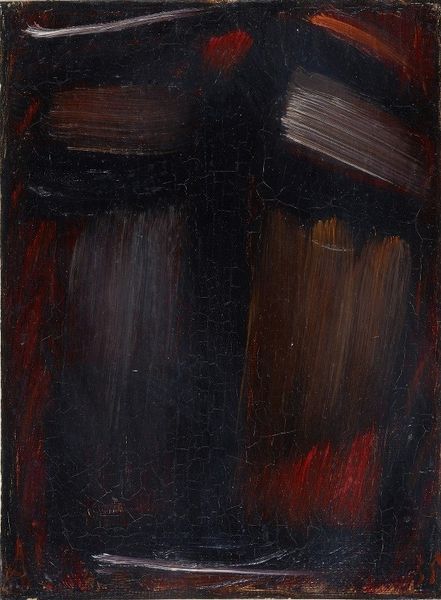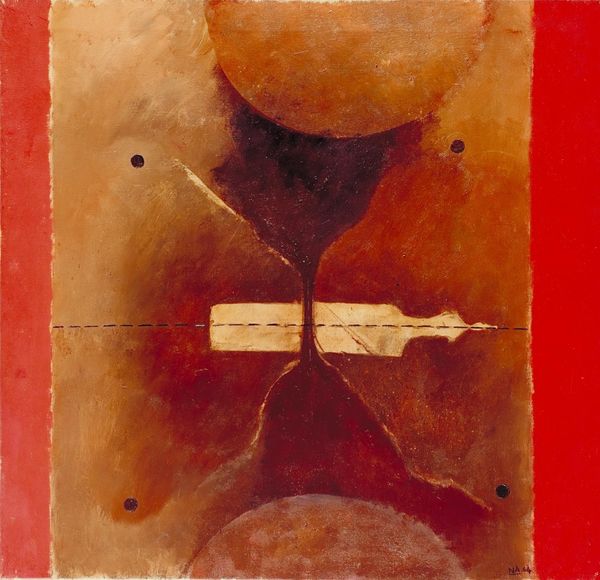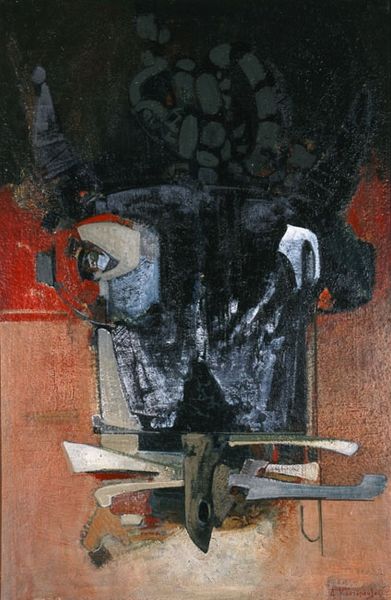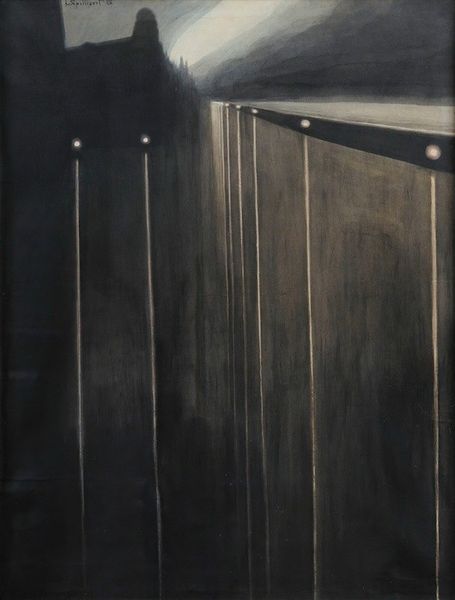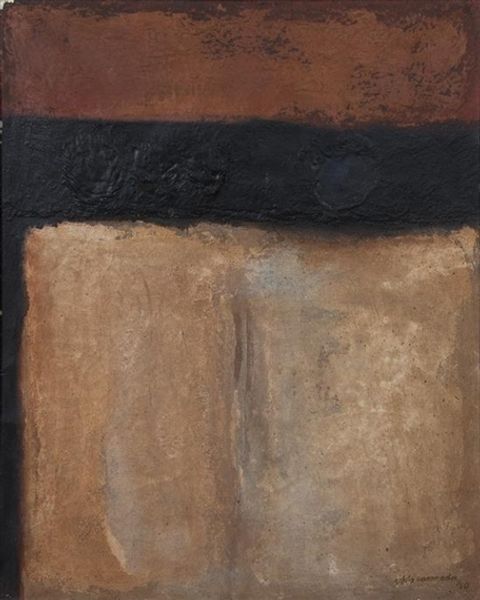
oil-paint
#
oil-paint
#
oil painting
#
vanitas
#
genre-painting
#
academic-art
#
realism
Copyright: Public domain
William Michael Harnett made this trompe-l'oeil, or fool-the-eye, painting of a horseshoe in the United States in 1886. These kinds of images play with ideas of illusionism and reality that were circulating in academic art institutions at the time. Harnett uses visual codes to create the illusion of three-dimensionality. The horseshoe is rendered with meticulous detail, from the rust and worn texture to the way it casts a shadow on the wooden door behind it. We should think about the social conditions that made this kind of image popular at the time. The rise of industrial capitalism meant that more people had access to consumer goods. Harnett's painting seems to reflect this culture of material abundance, and the horseshoe itself might be a comment on the changing role of horses in an increasingly mechanized society. As historians, we need to research the cultural and economic context in which Harnett was working to understand the significance of his imagery. Only then can we fully appreciate the ways in which this painting both reflects and comments on the world around it.
Comments
No comments
Be the first to comment and join the conversation on the ultimate creative platform.
